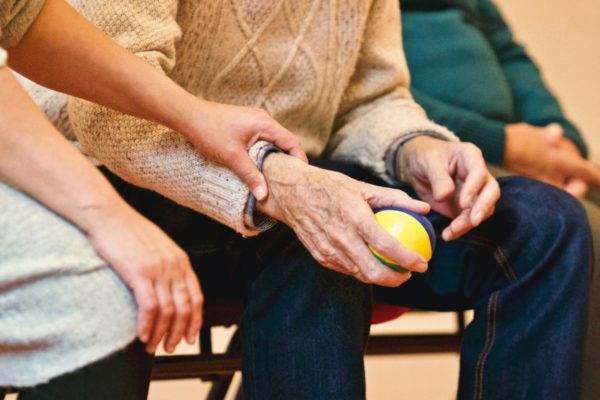What is manual therapy?
Many patients ask the same question when they hear the term “manual therapy.” What is it? Who does it? What is it good for?
 In the Physical Therapy field, manual therapy is utilizing skilled, hands-on techniques to relieve pain and restore mobility. Manual therapy includes kneading and manipulating soft tissues, which can increase circulation, reduce scar tissue, and relax muscles- which aide in the reduction of pain. Manual therapy can also include joint mobilization and manipulation where the therapist uses graded movements at specific speeds, forces and directions to move bones and joints to improve tightness in tissues surrounding joints and increasing flexibility and mobility. Manual Therapy is typically used in combination with an individualized exercise program designed by a therapist to restore function the specific area of treatment.
In the Physical Therapy field, manual therapy is utilizing skilled, hands-on techniques to relieve pain and restore mobility. Manual therapy includes kneading and manipulating soft tissues, which can increase circulation, reduce scar tissue, and relax muscles- which aide in the reduction of pain. Manual therapy can also include joint mobilization and manipulation where the therapist uses graded movements at specific speeds, forces and directions to move bones and joints to improve tightness in tissues surrounding joints and increasing flexibility and mobility. Manual Therapy is typically used in combination with an individualized exercise program designed by a therapist to restore function the specific area of treatment.
Some of the specific types of soft tissue manual therapy techniques include: Massage, Manual lymph drainage, Soft tissue mobilization, Scar mobilization, Myofascial release, Strain counterstrain, Graston, Active Release Technique (ART).
Joint specific techniques include: Joint mobilization, Joint manipulation/thrust, Muscle energy techniques, Mulligan Techniques, Traction.
Is manual therapy just a massage?
No, while massage is beneficial in reducing general muscle tension, manual therapy is a therapeutic treatment for specific conditions or impairments performed by a licensed Physical Therapist who has extensive training and knowledge of the human body.
Will manual therapy help my injury?
Most painful and stiff joints can be treated with manual therapy including your spine, shoulder, elbow, wrist, hip, knee and ankle. Research has shown that while exercise is a very valuable part of any PT rehab program, the addition of manual therapy in supplement to exercise has been shown to be more effective than either treatment on its own.
Reference:
Bang M, Deyle G. Comparison of Supervised Exercise with and without Manual Physical Therapy for Patients with Shoulder Impingement Syndrome. J Orthop Sports Phys Ther. 2000; 30: 126-137.
About the Author: Daniel Alvarez, DPT
Daniel was born and raised in the Bay Area. He graduated from San Jose State University in 2008 with a BS degree in Kinesiology. In 2013 he received his Doctorate degree in physical therapy from the University of St. Augustine. Daniel brings experience in various settings including outpatient orthopedic and hospital inpatient care. In his spare time he enjoys watching sports, staying active and spending time with family and friends. In addition to English he speaks fluent Spanish.



